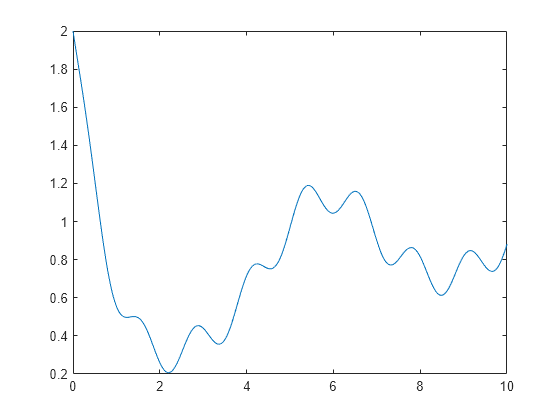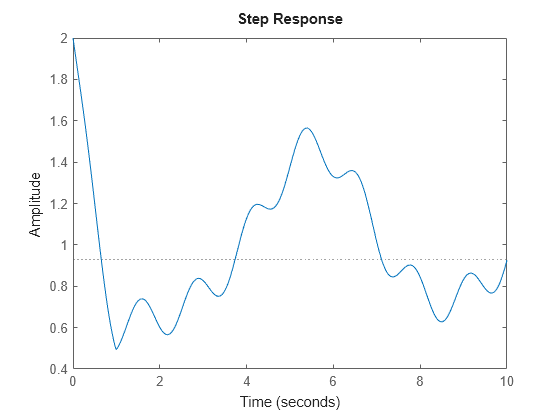ltvss
Description
Use ltvss to represent linear state-space models whose dynamics
vary with time.
You can use ltvss to create continuous-time or discrete-time linear
time-varying state-space models. In continuous time, an ltvss model is
described by the following state-space equations.
Here, A(t), B(t), C(t), D(t), and E(t) are time-varying state-space matrices and δ0(t), x0(t), u0(t), and y0(t) are time-dependent derivative, state, input, and output offsets, respectively.
In discrete time, an ltvss model is described by the following
state-space equations.
Here, the integer index k counts the number of sampling periods
Ts.
You can use an ltvss object to model:
Linear systems whose coefficients vary in time.
Nonlinear systems operating along a specific trajectory. For an example, see LTV Model of Two-Link Robot.
Nonlinear systems operating near steady-state conditions that change in time.
Use ltvss to construct LTV models whose dynamics are described by a
MATLAB® function (the data function). Use ssInterpolant to
construct LTV models that interpolate LTI snapshots as a function of time. See LPV and LTV Models for functions and
operations applicable to ltvss objects.
Creation
Syntax
Description
ltvSys = ltvss(DataFcn)DataFcn is the name of or a
handle to the data function, the user-defined MATLAB function that calculates the matrices and offsets for given
t or k values.
ltvSys = ltvss(___,Name=Value)


